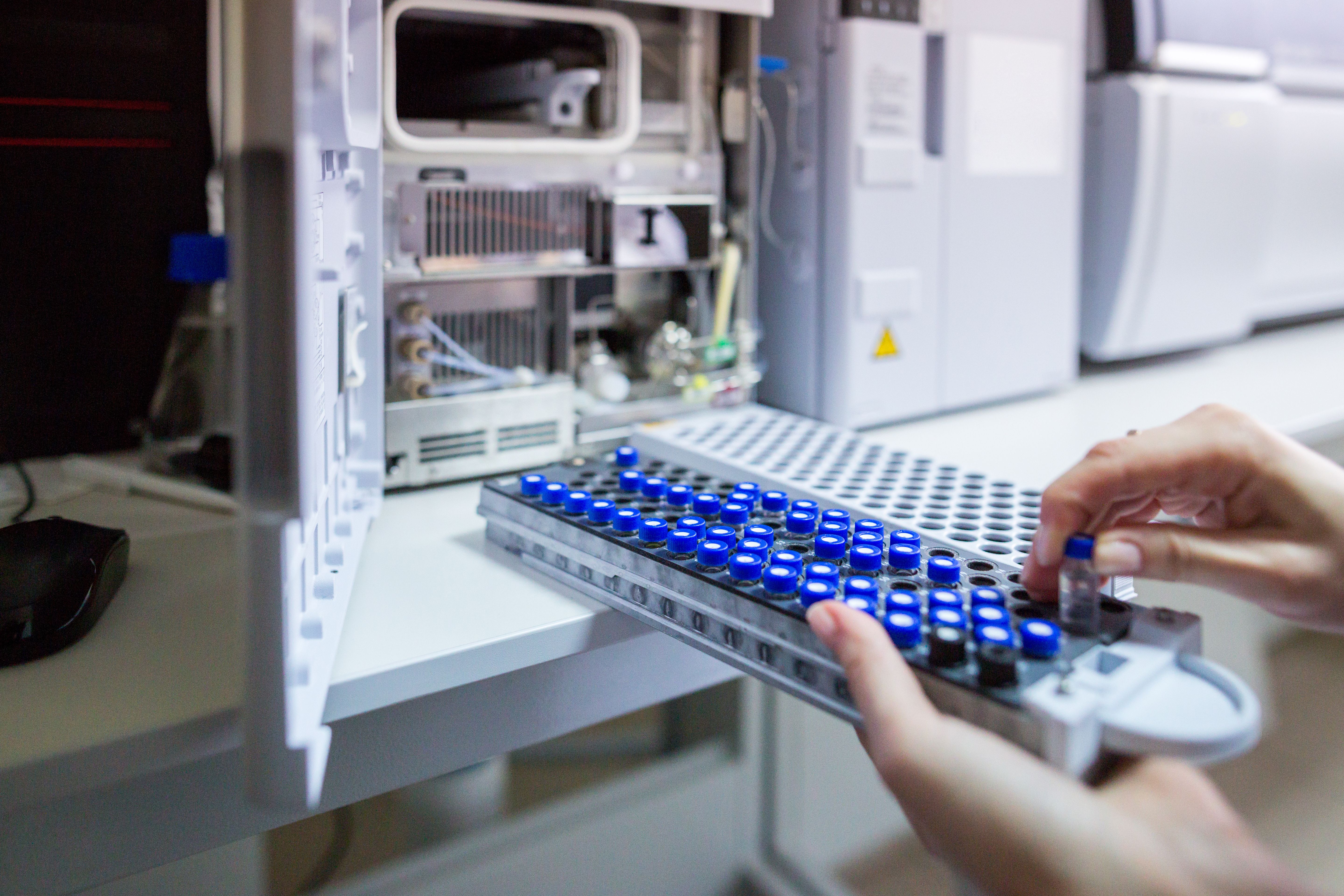Unveiling Advancements in HPLC Efficiency and Throughput
Efficiency and throughput have always been crucial factors in high performance liquid chromatography (HPLC) analysis. At the High Performance Liquid Phase Separations and Related Techniques (HPLC 2023) conference held in Dusseldorf, Germany, Robert T. Kennedy of the University of Michigan presented several projects aiming to push the boundaries of these performance metrics (1). The study led by Kennedy and other renowned experts explored novel techniques to enhance efficiency and dramatically increase the speed of HPLC separations.
The laboratory scientist prepares samples for download to High-performance Liquid Chromatograph Mass Spectrometr. | Image Credit: © Sodel Vladyslav - stock.adobe.com

One of the focal points of the conference was achieving unparalleled efficiency in HPLC analysis. Traditionally, higher resolution has been linked to smaller particles and longer columns, albeit at the expense of increased pressure requirements. However, the research team showcased their experiments with systems capable of operating at an astonishing 35 kpsi for lipid and metabolite separations. By employing relatively long columns (50 cm) packed with 1.0 to 1.7 µm particles, they achieved exceptional peak capacity, surpassing 1000, all within analysis times under 4 h. Notably, this advancement significantly improved the identification of lipids when analyzing plasma extracts. Furthermore, the team successfully expanded their findings from reversed-phase to hydrophilic interaction liquid chromatography (HILIC) columns, broadening the scope of their impact.
In addition to efficiency, the researchers tackled the challenge of enhancing throughput in HPLC separations. Although achieving rapid separations in less than 5 s had been previously demonstrated, the bottleneck lay in the time-consuming autosamplers, which typically required 15 s or more per injection. However, the team presented an innovative solution—a segmented flow input. This approach enabled samples to be injected at a rate limited only by the analysis time. The researchers showcased their groundbreaking achievement of analyzing a complete 96-well titer plate in approximately 100 s, providing a remarkable boost to sample throughput.
The implications of these advancements in HPLC efficiency and throughput are profound. Researchers and scientists across various fields heavily rely on HPLC for a multitude of applications, including pharmaceutical analysis, environmental monitoring, and metabolomics, among others. The ability to achieve higher peak capacity and resolution within shorter analysis times opens up new possibilities for comprehensive sample characterization and identification. Moreover, the significant reduction in sample analysis time through the segmented flow input approach paves the way for faster data acquisition and increased sample throughput, enabling researchers to process larger sample sets in significantly reduced timeframes.
The groundbreaking research presented at HPLC 2023 sets a new benchmark for HPLC efficiency and throughput. These advancements will undoubtedly drive advancements in various scientific disciplines, promoting faster and more accurate analyses, and fueling new discoveries in fields where HPLC plays a pivotal role. As these innovative techniques become more widely adopted, the scientific community can look forward to enhanced productivity and deeper insights into complex sample analysis.
Reference
(1) Kennedy, R.T.; Sorensen, M.; Anderson, B.; et al. Pushing the Limits of HPLC Efficiency and Throughput. Presented at the 51st International Symposium on High Performance Liquid Phase Separations and Related Techniques, Dusseldorf, Germany, June 19, 2023.
Study Explores Thin-Film Extraction of Biogenic Amines via HPLC-MS/MS
March 27th 2025Scientists from Tabriz University and the University of Tabriz explored cellulose acetate-UiO-66-COOH as an affordable coating sorbent for thin film extraction of biogenic amines from cheese and alcohol-free beverages using HPLC-MS/MS.








